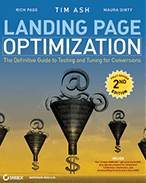How to Build a Bad Website that Visitors Won’t Come Back To (in 5 Easy Steps)
Last updated | You would think that given well over 10 years of Internet and the amount of websites that have come and gone over this time (and there are some great website disasters over the years), that websites would be of a higher quality than ever before. Sadly, that is still not the case – there are just as many bad websites out there than ever before. So, following in this theme of bad websites, I thought I would put together 5 quick steps to help you try and build a bad website that your visitors will be sure to not come back to.
You would think that given well over 10 years of Internet and the amount of websites that have come and gone over this time (and there are some great website disasters over the years), that websites would be of a higher quality than ever before. Sadly, that is still not the case – there are just as many bad websites out there than ever before. So, following in this theme of bad websites, I thought I would put together 5 quick steps to help you try and build a bad website that your visitors will be sure to not come back to.
I’m sure a few of these will ring angst-riden bells with many of you who work for internet companies! Let’s get started…
1: Don’t create website goals and key performance indicators
‘It’s going to be an amazing website – it simply can’t fail’
If you want to build a bad website that visitors don’t return to, then be sure not to plan out and create quantifiable goals or key performance indicators before its built (like x amount of visitors in 6 months or x amount of sales or sign ups). Its hard to measure success and improve your website in the long run without these. To avoid this mistake, its important to build these based on positive user experience, like average time spent, page views per visit and orders per visit. Meeting goals and indicators like these are a sure sign of a website that a visitor loves to come back to.
2: Don’t do any testing on your website pre-launch
‘We know exactly what our visitors want – testing is a waste of time and money’
If you really don’t want to build a website that keeps visitors coming back for more, then you should completely ignore doing usability testing and focus groups. I mean, its not like the visitor knows what they want to see on your website? Shame this is an all too common thing that happens all the time. Usability testing and focus groups can often uncover 80% of issues even on prototype websites – and are much easier to fix at this point.
3: Let your developers create the website with little help
‘Our developers really know how to build a great website with cool features’
Amazingly enough, websites are still often conceptualized and built in a silo by web developers. Unfortunately, developers are usually out of touch with what the visitor wants – and often violate many website usability issues that will ensure users don’t come back (and developers won’t even realize it). To ensure that a website doesn’t meet the visitors needs, and turns them away, websites should NOT be built as company-wide initiatives, involving many teams – particularly NOT with user interface design, art, web analysts, and marketing.
4: Brush off the importance of web analytics – analysts and the tool
‘Trust us. We know exactly what our visitors will be doing on our website’
Who needs to know who is visiting, where they are going and if they are coming back? Many, many websites are built without adequate tracking in place, or dedicated, experienced web analysts to gain visitor insight. Without doing both of these, you won’t know which of your pages have high bounce rates, which pages aren’t converting, and where your visitors are going instead of where you thought they would be going. Therefore, paying no attention to web analytics is a great way to ensure a website isn’t optimized for the best visitor experience, and turn them away in droves.
5: Launch your website, congratulate and move on
‘Great job on the website guys – it looks perfect – lets move on to the next project’
The final way to build bad websites and ensure visitors don’t come back is to completely ignore website optimization and website testing, and just simply move on to the next latest and greatest website project. In particular you should devote little or no emphasis and resources to website testing in order to fix and optimize websites for a better user experience. Its not like its been proven that website testing tools even work right? Sadly enough, this practice happens far too often, causing bad websites to never get better.
So please, lets continue to build really bad websites that visitors hate by following these steps above. Or maybe we can break this habit, and start AVOIDING these mistakes… and actually consistently build wonderful, (possibly life changing?), and great visitor website experiences. What do you all say?



